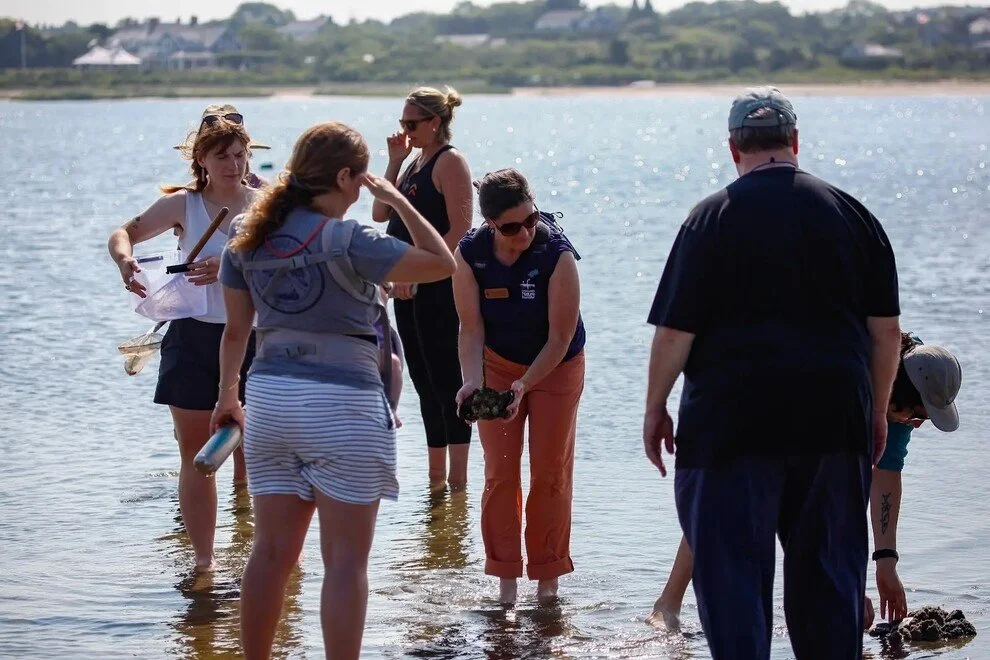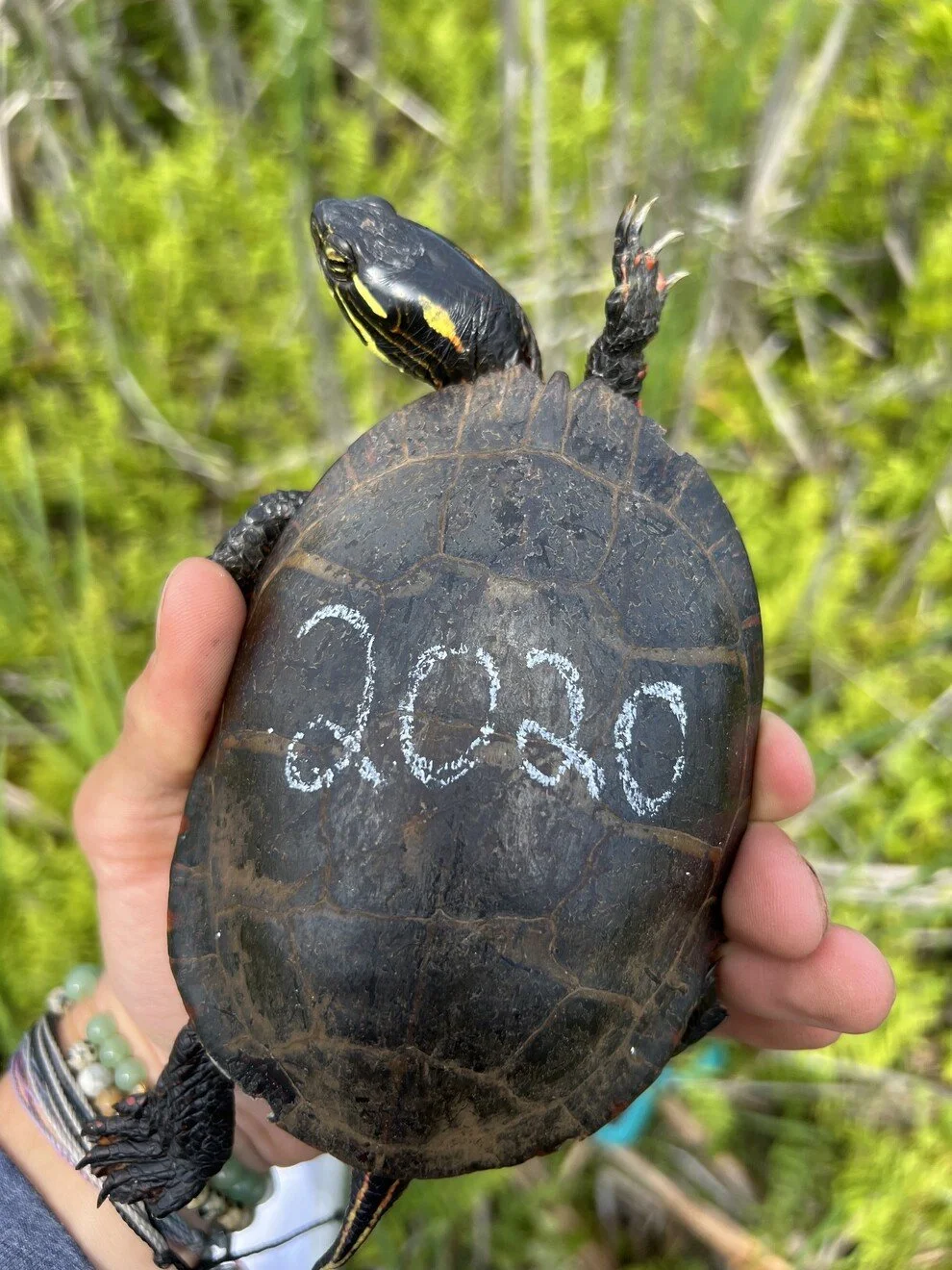
Current Nature: Black Tupelo Beauty
Attending The Ohio State University, I spent much of my undergraduate experience working in the hardwood forests that dominate the East Coast, walking under towering black cherry trees in a forest that would seem to continue forever. It was a memorable shock when I arrived at Nantucket and those same 60-foot-tall, thickly barked trees were here in a completely new form.

Current Nature: One Island, Countless Species: Nantucket BioBlitz 2025
Is it possible to identify and collect data on thousands of animal and plant species across Nantucket? Are there even that many living organisms on the island? Where do they all exist?
Just a few hours participating in the Linda Loring Nature Foundation and The Nantucket Land and Water Council’s BioBlitz event at the Creeks, led by Dr. Sarah Bois (LLNF), enlightened me to the variety of living organisms that inhabit the island. This beach and salt marsh habitat held more diversity than I could have ever imagined!

Current Nature: Yellow Thistle, A Hotspot Of Biodiversity
Despite their unique adaptations, thistles are often misunderstood and underappreciated; cast off as spiky weeds that grow rampant and are impossible to maintain. Although we have several species of non-native thistle on Nantucket that may outcompete other plants, our native thistles species are massively important to our ecosystems and promote biodiversity.

Current Nature: Turtles And Conserving The Common
As the Linda Loring Nature Foundation’s Conservation Research and Stewardship Intern, I spend much of my day trudging through a mosaic of wetland habitats, including bogs, pond edges, and ditches.
Equipped with waders and a backpack full of data collection tools, I head into thick vegetation and deep mud in search of one thing, the ever-elusive spotted turtle (Clemmys guttata)… or so I thought. Here’s the thing: although spotted turtles are relatively abundant across other parts of Nantucket, an adult spotted turtle hasn’t been officially recorded and measured since 2006, despite an abundance of habitat, anecdotal accounts, and hatchlings

New Species for Nantucket - Give a Warm Welcome for Purple Martins
Just last week, as I was walking the trails of the Linda Loring Nature Foundation (LLNF), I spotted something I had only dreamed might happen. Two Purple Martins were carrying nesting material into one of the gourds set up on the property. For the first time in recorded history, Purple Martins are nesting on Nantucket!
This is not just an achievement for LLNF, it is an exciting milestone for the entire island.

The Blanket Beneath Your Feet
As we sit inside during the rainy days of spring, warm coffee in hand to beat the chill and stay dry, Sphagnum moss thrives. Formed by the last glacier’s retreat, Nantucket island is home to numerous bog and wetland ecosystems, and Sphagnum is a major contributor to these unique and highly valued environments.

Appreciating Tent Caterpillars
Spring is in full swing, and with it are familiar signs of the season. One of the most drastic this year is the emergence of Eastern Tent Caterpillars. Have you noticed silky tents in cherry trees? These are the work of the tent caterpillars. Eastern Tent Caterpillars are a native species to Nantucket, with a unique life history.

Turtle Spotting
Walking through the heavily vegetated bog at the Linda Loring Nature Foundation, equipped with waders and data-collection tools, Dr. Sarah Bois taught me all about the turtle species on Nantucket and shared her hopes of finding a Spotted Turtle before the day was through. It’s about that time when our island’s turtles are becoming active again, so be on the lookout!
